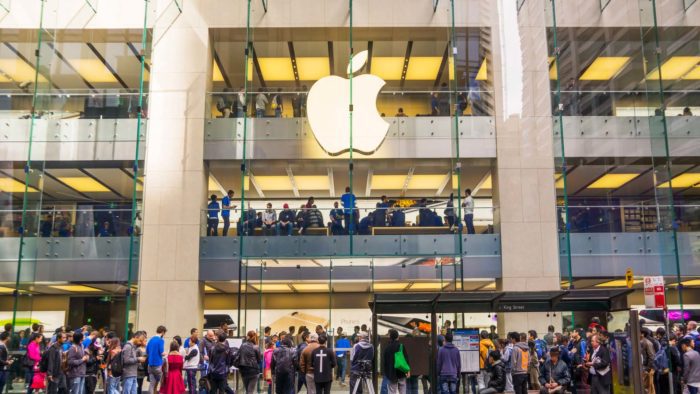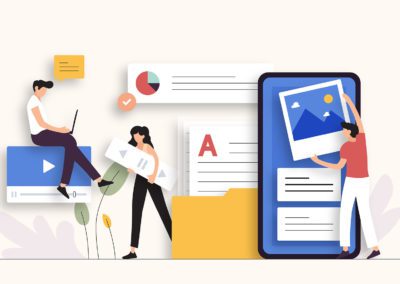How do you change the world? This is a question every business must ask, whether they have global ambitions or they just want to change the lives of their customers.

To find the answer, look at companies that have already changed the world forever — companies like Apple, whose founder, Steve Jobs, learned that the best way to change the world was by giving people something they didn’t know they wanted. And he did that through customer development.
Designing the Future

We all have our idols. Steve Jobs idolized Robot Noyce, Intel founder and the “Henry Ford/Thomas Edison of Silicon Valley.” When Jobs was still an unconventional upstart in his early 20s, Noyce took Jobs under his wing and let him in on his vision for the future of what would later become Silicon Valley.
Noyce argued that, as the technological capabilities of manufacturers increased, so would the availability of computing power. He told Jobs that as transistors continued to get smaller and smaller at a lower cost with less consumption of electricity, the devices we used would follow, shrinking in size while simultaneously becoming more intricate and advanced.
Later, Jobs would say that, at that time early in his career, Noyce was giving him a “perspective [he] could only partially understand.” But Jobs knew if Noyce was right, a computer company would need to constantly innovate not only to stay competitive but to provide customers with tech that could transform their experience of the world.
Jobs knew that to truly influence the consumer marketplace on a fundamental level and improve the lives of their customers, Apple couldn’t simply react to what customers said they wanted. Instead, they’d have to define “needs that consumers didn’t know they had,” as Sam Gustin put it.
Being Psychic 101: Customer Development

Learning your customers’ needs is far easier said than done. It’s not enough to just be aware of what customers say they want — to pull off true innovation, a business needs to have an intimate understanding of their customer base and how they navigate the world.
There are two ways for businesses to access this information. This first is through data gathering, which, following Facebook’s Cambridge Analytica scandal, is a bit of a gray area. Consumers are becoming aware that companies monitor their behaviors, especially online, and by and large, consumers don’t care for it.
If data gathering is becoming a legal and ethical minefield, how do you learn what your customers want? That’s simple: Just ask.
Serial entrepreneur Steve Blank developed the practice of customer development, a strategy to help businesses gain insight into their customers’ wants so the company can provide better products or services. This is achieved through customer interviews, meaning that you have to make time to talk with customers directly and learn who they are, what they want, and how your company can deliver.
If this sounds time-consuming, that’s because it is. But if you learn the strategies behind this valuable technique, customer development can pay off in spades.
Make It So

Consider the iPod. Today, the original iPod seems like an ancient piece of early 2000s technology, but this little metal rectangle changed the way we listen to music forever.
As Gustin wrote, “Americans might have been satisfied with — or at least sanguine about — their Sony Walkman analog tape decks, but that was before the iPod and iTunes, which dramatically changed the music business and the way we interact with our music players.”
Apple would repeat this same market-shifting trick a few years later with the iPhone. People wanted to have access to technology everywhere, but most consumers resisted clunky laptops and Blackberries because they didn’t want to haul around something so cumbersome. So Apple introduced the iPhone — a slim, portable device with endless capabilities.
And Apple isn’t the only company to find success by answering their customers’ unspoken need. It was through customer development that Amazon got involved in the cloud computing business.
When talking to their customers, Amazon noted that many of the small businesses that used their services did not have the resources to utilize cloud storage, though it would benefit their companies. Amazon developed their own cloud computing service and offered it to their customers, who readily took advantage of it. Today, Amazon does more business in cloud computing than HP, Google, or Microsoft.
If It Ain’t Broke …

It’s this level of innovation that keeps Apple at the front of the pack. But while a lot of Apple’s success comes from creating something entirely new, they also know how to take the information they gain from customer development and double down on a good thing.
When Apple developed technology to put a camera in their iPods, the iPod Nano came with a built-in camcorder, but the iPod Touch didn’t. Why? Because Apple listened to their customers. People didn’t buy the iPod Touch for the fancy gadgets. They bought it so they could access the games and apps in the Apple App Store.
“What we really see is it’s the lowest-cost way to the App Store, and that’s the big draw,” Jobs said about the iPod Touch. “So what we were focused on is just reducing the price to $199. We don’t need to add new stuff — we need to get the price down where everyone can afford it.”
Addressing your customers’ needs isn’t always about reinventing the wheel. Customer development means you learn both what customers want and why they like your product. A successful company has the answers to both these questions and knows how to act accordingly.
Steve Jobs was a divisive figure, but no one can claim he followed the pack, and you shouldn’t either. Always working to improving your businesses’ central offerings is vital, but you can’t stop there. Instead, you should spend time — real, meaningful man-hours — drilling into your customers’ buried needs. Then you can create innovative solutions to answer those needs and take the first steps toward changing the world.






